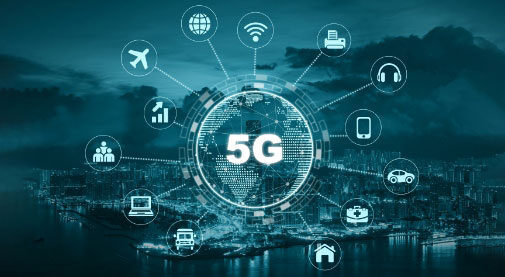The Internet of Things (IoT) is a broad term that includes the number of wirelessly connected devices around us. It refers not only to smartphones and tablets but also to millions of machines, devices, and new curves on conventional products that were not related to the internet.
But what makes it all feasible? How do these devices relate to the internet and communicate with each other?
We’ve spoken a lot about the role 5G networks will soon play in the IoT change, but now some familiar (and less-familiar) RF technologies are pushing it right now. Let’s dive into important wireless technologies for IoT products.
Wireless Technologies for IoT Connect
As all IoT devices broadcast and get information wirelessly, they don’t do it directly. There are several options for connectivity, and some are quite fit for some applications than others. Factors like battery life, area of coverage, power specifications, and bitrate must all be considered when choosing which option to use for a given application. So what are the different advantages and what makes them separate?
WiFi
Drive into just about any coffee shop, class, or library, and you’ll usually find WiFi (in fact, you’re probably reading this on a WiFi connection right now). It has been named the official 802.11 by the Institute of Electrical and Electronics Engineers (IEEE) and runs at either 2.4 GHz or 5 GHz. Most routers try the most extensive range of 100 meters.
Many IoT devices right now use WiFi, and many more will do so in the coming years. With the advent of As 5G networks, WiFi will likely play an important role in wireless offloading.
Also read: A Glimpse at Indoor Location Tracking Technologies
Bluetooth
Following, we have Bluetooth. Those little hands-free earpieces for your phone have been around for a while soon, but this technology can do so much more. Bluetooth (IEEE Standard 802.15.1) is practiced in many different pharmaceutical and industrial devices. Like WiFi, it also runs at 2.4 GHz, but it has some essential differences that make it perfect for installing smaller products.

Bluetooth systems are meant to be used only within a short-range (0-10 meters), and as such, need less power. This makes it fit for embedding in small electronic devices, such as wireless headphones, smartwatches, and other wearable electronics, along with wireless keyboards, mice, speakers, and more.
An alternative called Bluetooth Low Energy (BLE) was released in 2011 and needed significantly less power than standard Bluetooth. Whereas it is not ideal for making phone calls, it is suitable for cyclically sending small amounts of data. BLE is utilized in products like industrial monitoring sensors and some relevant medical tools like blood pressure monitors.
Z-Wave
“Z-wave” may not be a wireless technology in IoT you hear regularly but is showing to be one of the most common wireless technologies for IoT products. Z-wave is a specific protocol used especially for home automation and connectivity. Maybe the most prominent example of Z-wave technology currently is Amazon’s Echo, which has transformed how tech-savvy customers shop and practice media. Almost 2000 Z-wave products on the market, enabling connectivity for home products ranging from IoT garage door openers, fire alarms, fans, and covers, to remote-controlled front door locks and thermostats.
Z-wave systems generally have a range of up to 30 meters and operate in the frequency band below 1 GHz.
Zigbee
Zigbee (IEEE 802.15.4) is a wireless standard that is usually utilized for industrial applications and some household products. Related to WiFi, it comes with 2.4 GHz bandwidth, only has lower power demands, and is created for much more restricted data exchanges, running at 250 kbit/second.
Zigbee supports a range of up to 100 meters, but it can communicate more by using a mesh network of devices running as nodes that send data onwards to the device it is designed for. Zigbee networks are very scalable and, thanks to 128-bit encryption, give a high level of security associated with other wireless technologies for IoT. ZigBee technology is right now utilized in several industrial applications and sensors.
LoRaWAN
Long Range Area-Wide Networks (LoRaWAN) is a protocol developed for IoT applications on wide area networks. It is designed to let communications at low bit rates in low-power wide-area networks connect IoT devices with a localized network server.
It is more secure than most other wireless technologies for IoT as it can convey encrypted data at various rates and bitrates.
LoRaWAN has many technical and intelligent home applications. With a range of up to 20 km, it is a critical technology that allows IoT “smart cities” programs to move forward and work as efficiently as feasible.
Conclusion
Technology development like 5G and IoT Solutions has infinite possibilities for many technologies to meet several requirements. As per predictions, our wireless technology must support billions of devices with minimum latency and enhanced security shortly.



